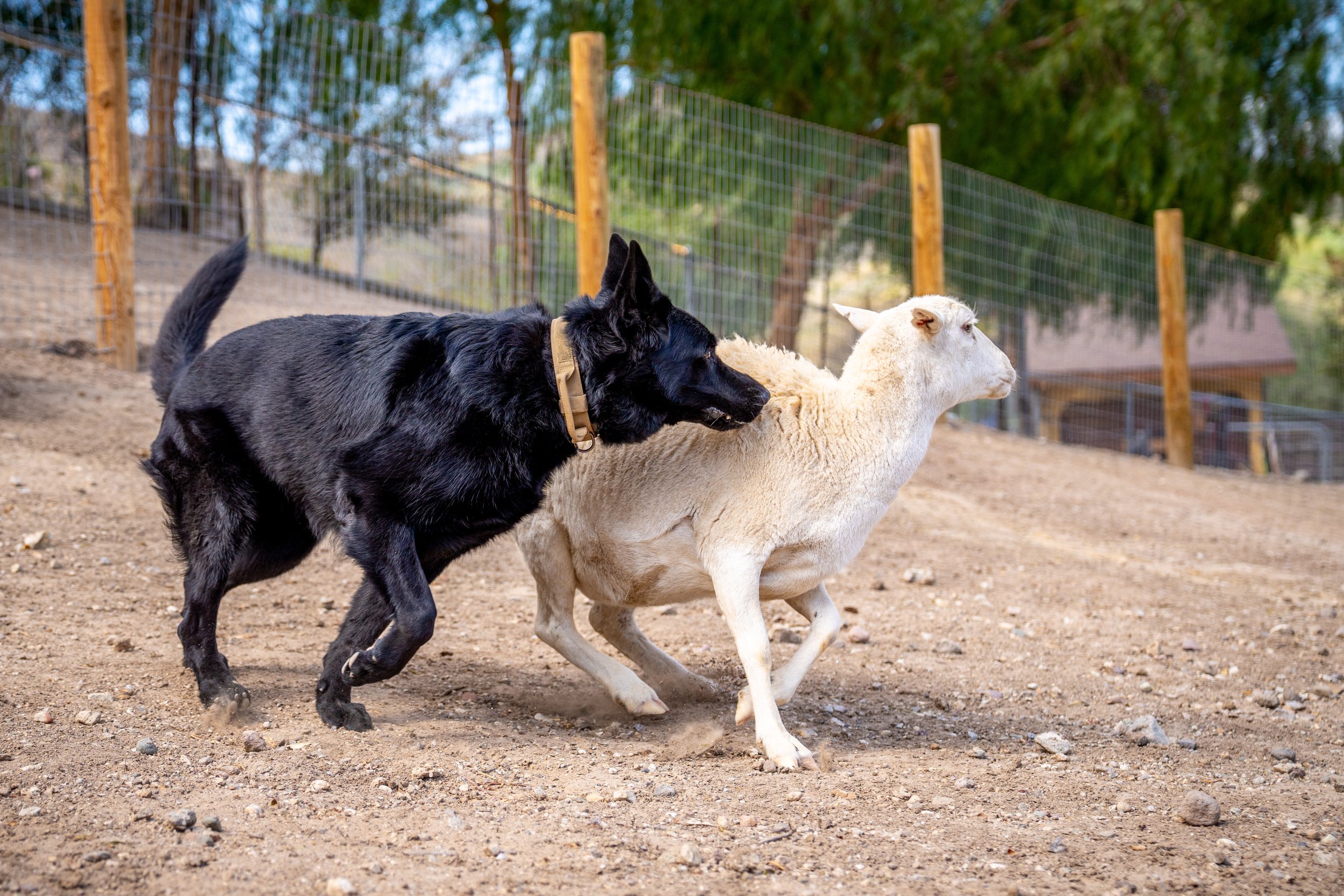
Recall & Livestock Safety | Specialist Training
The Ultimate measure of Freedom - and the Ultimate measure of Safety.
Recall is not a ‘skill’. Recall is the culmination of your dogs relationship with you, with the world around them, and the other animals they share it with.
When we work with clients on recall, it is essential that they understand from the beginning what true off lead freedom requires as a complete picture. It is not simply a question of whether or not your dog will come to you when called. It’s a question of whether or not you can stop them running off in the first place. Can you stop your dog running after another dog, or a friendly group of strangers? What about a bird in flight? What about the scent of a deer hidden in the trees that you can’t see? And what about a herd of sheep - on another hill, over a mile away? What do you think your dog will do when it gets there? and do you have confidence that you can call your dog back - when your dog just ran over 1600 metres at 35 mph, to get to a prey animal that you didn’t even know was there?
Every dog is different, and the range of issues that my clients face can be extremely variable. When we work with our clients on recall, we want to ensure that we can create absolute off-lead safety whether you’re dealing with the absolute basics, or if you have a dog living in the middle of the moorland with a known history of killing livestock. We also want to ensure that you and your dog are working to the highest ethical standards.
Livestock Avoidance - Modern Remote Collar Training
Combining the highest ethical standards, scientific data & training practices for proven effectiveness in Livestock Avoidance
The remote collar is understandably one of the most hotly debated tools in dog behaviour. Welfare charities claim the tool should be banned in the UK - whilst the professional dog training industry is seeing a resurgence in remote collar use, combined with modern training practices for resolving predatory behaviour and recall issues in dogs. Remote collar training is the only scientifically proven way of stopping predatory behaviour in dogs, even those which have attacked and killed livestock in the past. At The Dog’s Way, we believe its essential that our clients understand how powerful these tools are - either to your dogs detriment and suffering, or to save lives and provide absolute off-lead freedom and safety. We actively encourage all of our clients to do their own research, so that you fully understand the safety potential and risk with these tools.
What a Remote Collar should be.
Positive Reinforcement Paired Conditioning
Modern remote collar training uses either a Vibrate Collar or an Electric Stimulus collar overwhelmingly in a non-aversive capacity. By pairing the sensation of the collar at a low level (a subtle vibration or a gentle tingling sensation) with a familiar reward (food, praise and affection), professional trainers can teach dogs to recognise the low level sensation of a remote collar as a form of communication in the same way as a voice command, hand gesture, or a lead - all in a way which is fun, enjoyable and engaging for the dog, and at a level so low that most people cannot feel it.
Freedom and Communication for Deaf and Blind dogs.
Modern remote collar training has opened up the opportunity for deaf and blind dogs to enjoy off lead freedom through positive reinforcement paired conditioning - using touch sensation as a replacement for whistle recall.
What a Remote Collar sometimes needs to be.
Limited Aversive Stimulus when lives are at risk
In situations where a predatory dog may attempt to chase or kill other animals such as birds, deer or sheep - a dog which has already been properly introduced to the remote collar can be taught to avoid these animals using the sensation as a limited aversive.
In these instances, the remote collar - specifically the electric stimulus - is by requirement an uncomfortable and unpleasant experience designed to deter the dog from chasing and killing other animals. Under professional guidance and supervision, the goal should always be the lowest and most limited use possible of aversive stimulus to successfully deter a dog from an attack.
In the majority of cases, a single aversive stimulus from a remote collar is enough to deter a dog from prey attacks for a period of up to 3 years.
What a Remote Collar should NEVER be.
Abuse and Misuse
Remote collars - particularly the electric stimulus collar, have the potential to be misused and abused at very high levels of stimulation, as a way of trying to force obedient behaviour - and often with devastating consequences. This typically takes two forms - using very high level stimulus as an aversive for basic issues such as jumping up at people, or to compel compliance.
Our Position
At the Dog’s Way, we believe that these remote collars should be licensed in the same way as firearms. Given that it is legal for farmers to shoot a dog which is worrying livestock with a licensed weapon - dog owners should have the ability to protect their dogs against these risks, and a responsibility to protect livestock.
If you want to learn more about the remote collar, check out our FAQ Below.

